The rock-shrines of Ellora are situated, about 30 kms from the noisy atmosphere of bustling Aurangabad city. Spread away in the hills from North to South, the majestic amphitheater of the caves reveals the full glory of its design. When I was wandering in the hills of Ajanta one day ago, someone pointed that Ellora would be more fruitful to explore than Ajanta. Along-with the frescoes of Ajanta Caves, the rock-sculptures in Ellora are included in the World Heritage Site List by UNESCO.
Read about Ajanta Caves: The Everlasting Frescoes of Ajanta Caves
Despite maintaining a hectic schedule, I rushed to Shirdi in the evening, paid a visit to Sai Baba Temple in the night and hurried back to Aurangabad next morning, so that I could explore Ellora Caves on that day itself. Ellora is popularly known as Verul Veni among the local people, and you may see many signboards indicating Verul Veni instead of Ellora Caves. In fact, it was originally known as Elur and Elapura due to its location near the Elaganga River which rises from the neighbouring hills, however, some tongue-twisting done by Britishers named it as Ellora.
Because of this proximity to the city of Aurangabad, Ellora Caves are conveniently accessible by the public transports. I went to the Government Bus Stand in Aurangabad and there was many buses lined up for Verul Veni at every 30 minutes. Many Indian as well Foreign visitors were boarding the buses at the bus stand. Verul Veni is so much popular and so much iconic that there is no trouble to reach there directly in a cost-effective manner, unless someone mixed up it with everlasting Ajanta Caves, which is in opposite direction.
After 25 mins of bus ride, about 17 kms away from the city, the bus crossed across the Daultabad Fort also known as Deogiri (Devagiri) Fort. Standing on a conical hill of about 200 meters height, the mighty Deogiri fort was famous for its exceptional defense system for the many centuries. The palace on the hilltop, Chand Minar in the fort compound and some portions of the exterior wall were visible from the moving bus, but the fort is indeed worth a visit.
I couldn’t explore it due to the paucity of time, but a local fellow traveller revealed some information about the fort. The fort was equipped with many internal defense systems like complex arrangements of entryways, curved walls, tunnels and labyrinth (bhoolbhulaiya) etc. The fort is surrounded by a moat filled with water. In ancient times, crocodiles were said to have been kept in the moat for protection from enemy attacks. If intruders managed to enter in the fort anyhow, they got caught in some tunnels and the guards would greet them with hot oil and burning coals, grilling them alive.
The bus continued towards Ellora and we reached there in 45 minutes from Aurangabad. The main road as well as the leading lawn was bustling with the colourful tourists, majority of them were school children on picnic trips.
While Ajanta is famous for its frescoes, the wall paintings; Ellora is more famous for its rock-cut architectures. There are 12 Buddhist, 17 Hindu and 5 Jain Caves carved out from a 2 km long cliff-face, running North to South containing rock-cut sculptures, magnificent temples and monasteries dated back from 6th century AD to 11th century AD.
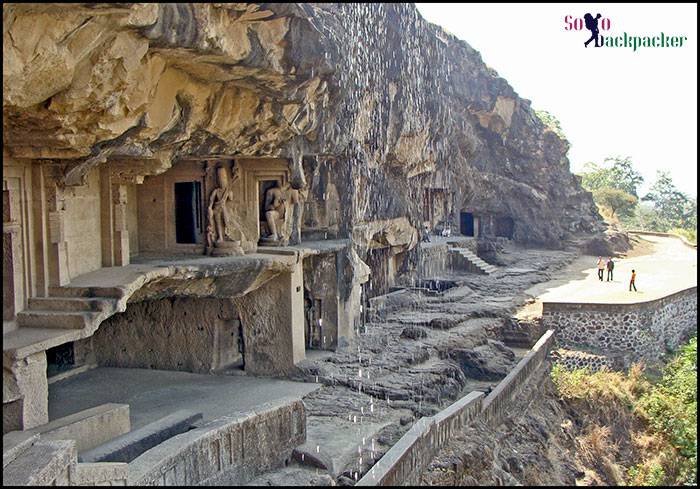
The Jain Temples are located at the Northern End, the Hindu Caves and Temples are in the Centre and finally the Buddhist caves are at the Southern End. Among the more prominent Ellora Caves; the Cave nos. 2, 5, 10 and 12 are of the Buddhist group, Cave nos. 14, 15, 16, 21 and 29 are of the Hindu group and Caves 32 to 34 are of the Jain group.
After buying the entry ticket, I moved towards the front lawn. At the end of the lawn, there was a huge rock-cut temple just right in front of me. Hence, I started my cave-hopping at Ellora from the temple only. It turned out to remain the most significant attraction of all Ellora Caves. I was there at the Cave 16, the site of Monolithic Kailasa Temple.
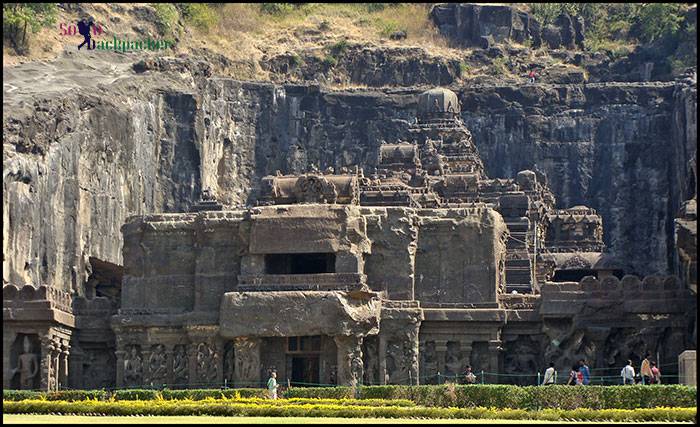
Cave 16: Out of all 34 caves at Ellora, the cave number 16 is considered as the star attraction among the tourists. It consists a mega monolithic rock-cut temple known as Kailasa Temple (Kailasha or Kailashnath Temple). It is believed to be sculpted under the Rashtrakuta Rulers from 757 AD to 783 AD. It is notable for its vertical excavation from the top of the original rock towards the bottom and scooped out all through from outside to inside. This is designed to recall Mount Kailash, the abode of Lord Shiva – looks like a freestanding, multi-storied temple complex with all essential elements of a temple, including main shrine, Nandi shrine, gateway, surrounding cloisters and subsidiary shrines.
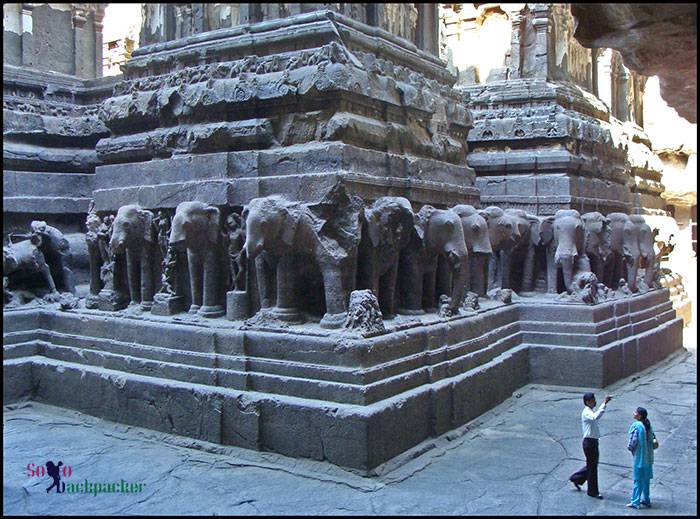
The entire complex is sculpted in the shape of Vimana or Chariot. The main hall of the temple is carved with floral and animal designs. On the ceiling of the main hall is carved full relief of the dancing Shiva. In the courtyard, on each side of the Chariot, the huge carvings of elephants give an impression that rather than driven on the wheels, the chariot temple is carried on the back of the Elephant and the other animals.
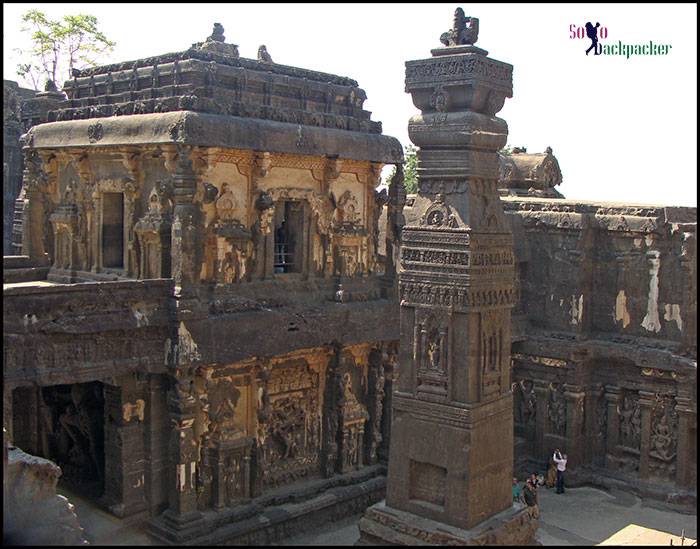
The northern side of the temple has the acts from Mahabharata, and the southern side of the temple has the acts from the Ramayana. Standing tall among the caves of Ellora, it is a splendid achievement of Dravidian art.
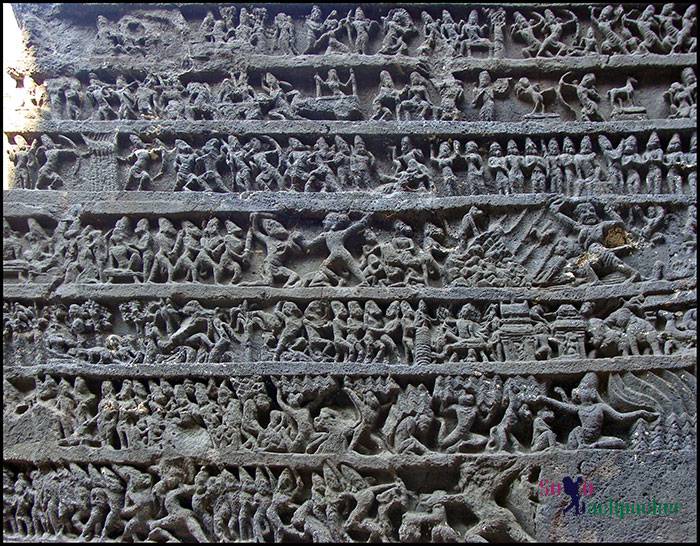
Cave 15: Belonging to the 8th century AD, the cave temple of Cave 15 known as Dasavatara Temple. It is a double storeyed structure where many incarnations of Lord Vishnu are depicted on the walls. The whole temple is designed on a grand scale, executed on elevated platform and entered through a rock-cut gateway, which leads to a courtyard. The ground floor has massive, square sectioned pillars with four cells and is plain and devoid of any notable sculpture. The upper floor is dedicated to Lord Shiva.
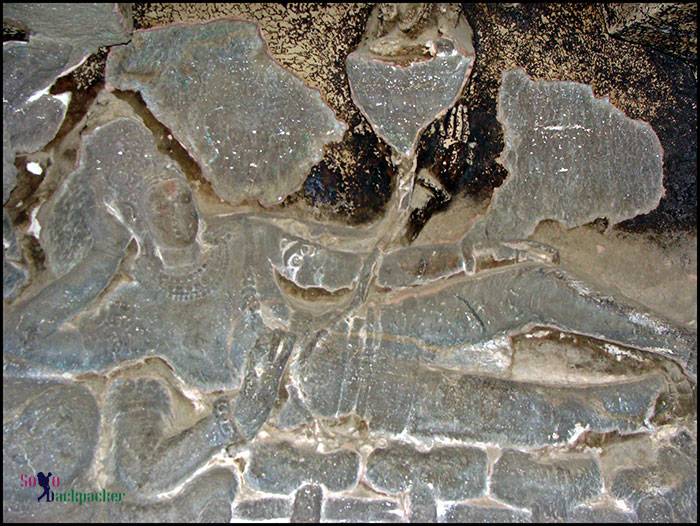
Cave 14: Due to a sculpture of Ravana shaking the Kailasha Mountain is illustrated on its wall, the cave 14 is also known as Ravan Ki Khai. The pillars of the hall are plain and square. The decorative panel on its wall represents the sculpture of Durga and two Gandharwas, Gajalakshmi seated on a lotus, Lord Vishnu in Varah incarnation, etc.
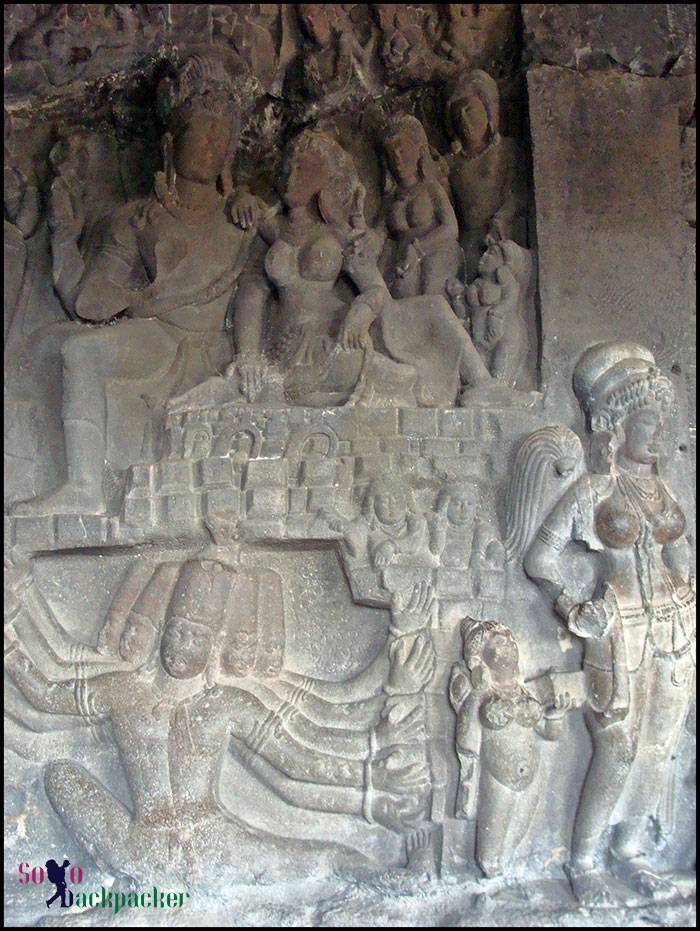
At the southern end, Cave 12 to Cave 1 are dedicated to Buddhism. Eleven out of the twelve Buddhist caves typically consist of viharas or monasteries with prayer halls: massive, multi-storeyed buildings carved into the mountain face, including living quarters, sleeping quarters, kitchens, and other rooms.
Do You Know There is an Ajanta in The Himalayas also? Tabo Monastery in Spiti Valley
Cave 12: Locally known as Teen Taal because of its three floors, the Cave 12 is also considered as the biggest excavation at Ellora. It is primarily a Buddha Vihar (Monastery). The walls of this monastery represents many deities like Ratalokeshwara, Manjushri, Tara, Padmpani, Vajrapani etc. On the second floor, there are many sculptures on the right and left wall of the cave representing the figures of Vipashi, Amitabha, Amogha Siddhi, Vajasattva , Mahamayuri, Tara, Pandra etc.
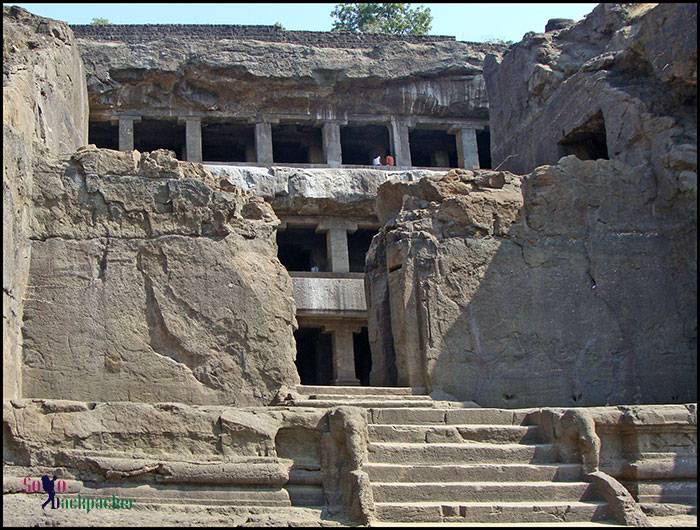
Cave 10: It is basically a Chaitya worship hall known as Vishwakarma Cave. It is also known as the Carpenter’s Cave, because the rock has been given a finish that has the appearance of wooden beams. Beyond its multi-storeyed entry is a cathedral-like stupa hall also known as chaitya-griha (prayer house). At the heart of this cave is a 15-foot statue of Buddha seated in a preaching pose.
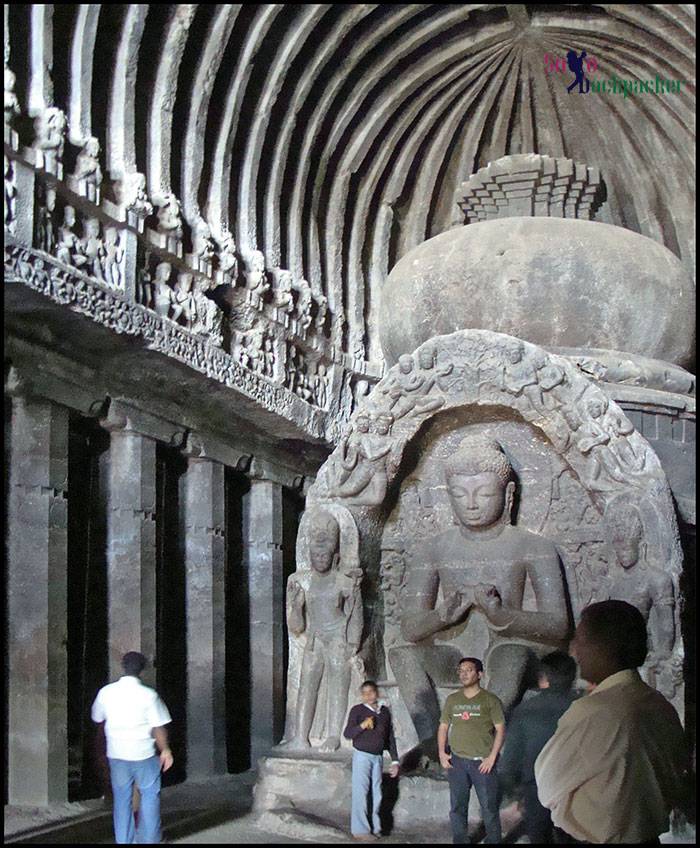
The caves no. 1, 2 and 5 are mainly Buddhist Monastry and depict the life of Lord Budhha through sculptures within. The cave 1 may have been used as the residence of stone cutters earlier.
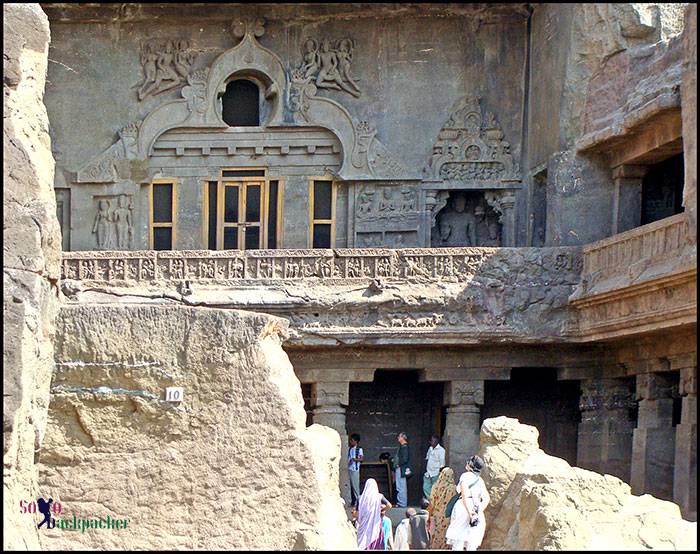
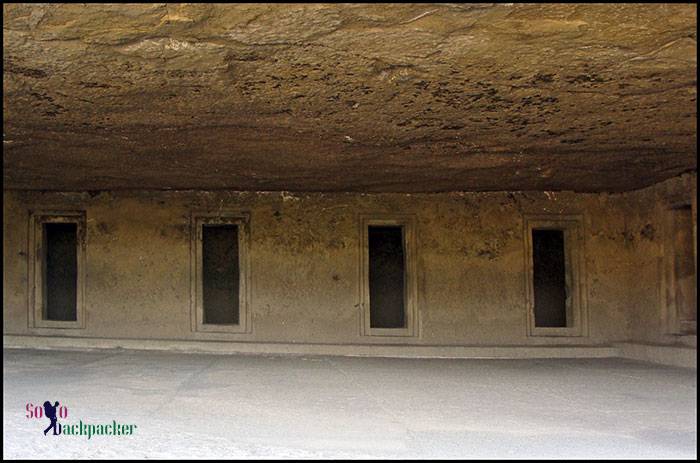
At the northern end, Cave 30 to Cave 35 appear a bit away from the other caves and basically dedicated to the Jain Sculptures. They all belong to the Digmbara sect of Jain religion.
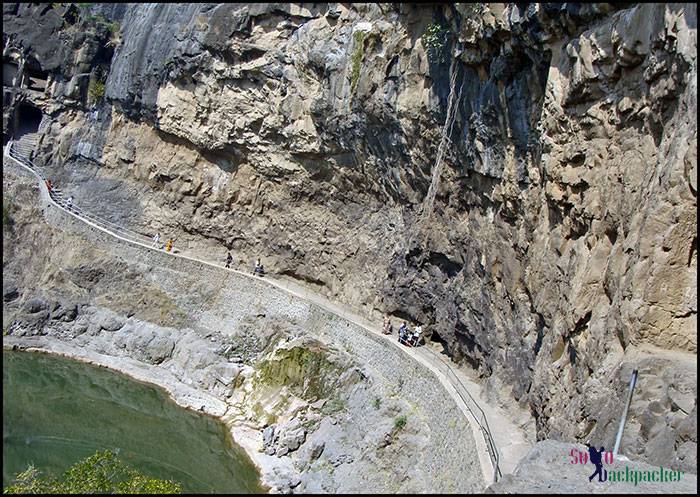
Cave 30: It is known as Chhota Kailasa and is a freestanding monolithic shrine, probably a replica of the Great Kailasha Temple of Cave 16, but on a smaller scale. The exterior is in Dravidian style, being only one storey, but the spire is low and unfinished.
Cave 31: It is an unfinished cave. Its porch is carved out entirely on the three sides and stands in a deep excavated pit. A small cave is seen on the right.
Cave 32: It is a two-storied structure with some extraordinary sculptures of Lord Mahavira. There is a large-size stone elephant standing on the right-side of the entrance. The top floor which appears as an assembly hall, is called the Indra Sabha because of its exquisite and detailed carvings.
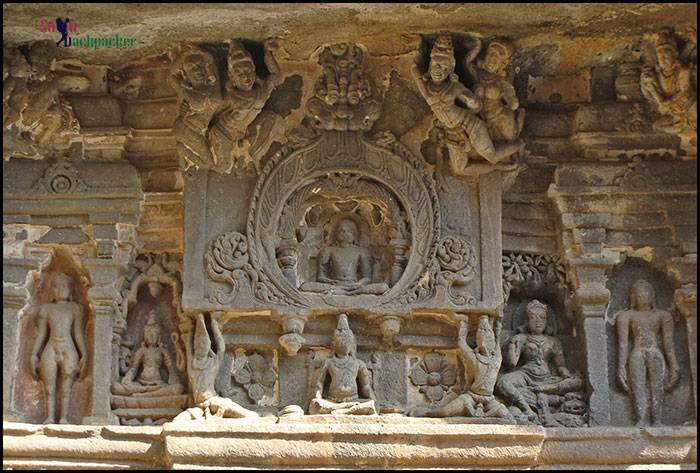
Cave 33: It is a double storeyed structure. The ground floor includes a main hall with the entrance. The two sides of the entrance have the figures of Matanga and Sidaika with minute carving details. The black wall contains the sculpture of Lord Mahavira seated in Padamasana. The mail hall consists of attractive pillars with intricate carvings.
A beautifully preserved sculpture of Matanga Yaksha is also visible in this cave, where he sits on an elephant under a banyan tree. Matanga is considered as the God of Prosperity.
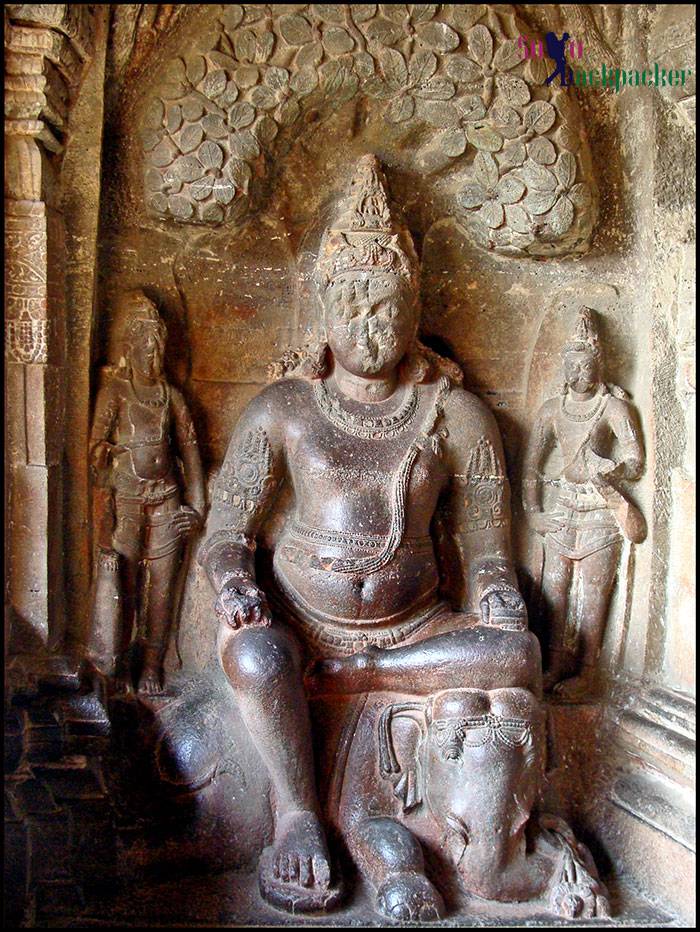
Cave 34 is the last in the series.
Walking from one cave to the another, from one end to the another end, it requires almost a full day to enjoy the non-living splendour of the rocks at Ellora. The intense sun rays make it very difficult to walk in the open area, but once you enter in a cave complex, the grandeur of the sculpture and aura of the craftsmanship makes you alive with their extraordinary appearance. The rocks at Ellora really rock! The delicate carvings on the rocks are beyond the limits of the public imagination even now, but when you are at Ellora, you have to re-think about the power of being human. Ellora caves provide you a visible indication of the strong willpower of our ancestors. They impart us, a valuable lesson that a human mind can do anything at any point of time in the history to keep inspiring its future generations forever.
I returned to Aurangabad in the evening. On the way back, I managed to visit a beautiful temple known as Bhadra Maruti (Hanuman) Temple at Khulabad, just 5 kms from Verul Veni (Ellora). Fortunately, our shared jeep included a 5-minute scheduled stop at the temple, so that everyone could offer their prayers.
Unfortunately, during that trip, I was not aware that Grishneswar Temple, one of the twelve Jyotirlingas, is only one kilometre away from Ellora Caves, else I could have included that also. Similarly, due to the shortage of time, I was unable to visit Daulatabad Fort as well as Biwi Ka Maqbara (dubbed as Mini Taj Mahal) in Aurangabad. But due to the missed attractions, I always have a valid reason to plan another trip to Aurangabad in near future.
How To Reach Ellora Caves? The best way to reach Ellora Caves (Verul Veni) is by a public bus from Aurangabad. It is just 30 kms away from the city and bus fare is approx Rs. 35 per person. Shared jeeps and shared autos are also available.
Maharashtra Tourism Development Corporation (MTDC) operates a guided tour to Ellora Caves on the daily basis except Tuesdays. The guided tour also includes the other attractions like Biwi Ka Maqbara, Daulatbad Fort and Panchakki (Water Mill). An AC bus leaves from MTDC Resort near Aurangabad Railway Station at 08.30 AM and returns to the same place by 5.30 PM. The total cost of this tour package is Rs. 280 per person. Entry fees to the monuments are not included in this package.
Aurangabad is well connected with other parts of India by Road and Rail networks. It also has an airport and there is one or two direct flights on daily basis from the cities like Delhi, Mumbai, Bengaluru, Hyderabad and Udaipur.
Timings: Sunrise to Sunset through the year, even on the National and Public Holidays, but remain closed on every Tuesdays.
Ticket Prices: Rs.10 for Indian Nationals , Rs. 10 for the nationals of SAARC and BIMSTEC countries. Rs. 250 for other foreign nationals. Still Photography is Free, but Rs. 25 for Videography.
Where To Stay at Ellora Caves? Two-three high end and few budget accommodations are available in the immediate vicinity of the caves near Ellora Caves, Khuldabad and Daulatabad. However, majority of the tourists stay in Aurangabad and visit Ellora Caves on a day trip. Hostels are also available in Aurangabad city.


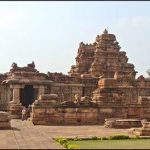
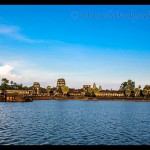
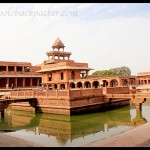
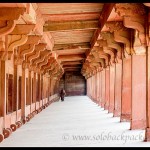
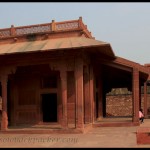
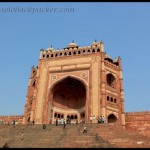
Sir,
What is the minimum time required to complete seeing all the caves?
One Day is good for Ellora Caves.
Dear Solo Backpacker,
It is the best guiding article about Elora (and also Ajanta) that I found so far in internet. Thanks a lot for sharing these in a very easy language.
I am David from Bangladesh. I am planning to visit both of these caves this Feb. I will be staying at a Hotel in Aurangabad with my family (of 8). Could you please let me know
1. whether there are one day tour package for Ajanta and Elora (two separate days)?
2. Or, should we take a van from Aurangabad?
3. How much does a Tourist Guide cost for the day/half day?
4. I will have two kids in my group, should we take any other preparation?
I may not ask you these many questions but it seems that you are an expert on this. Thanks a lot bro/sis.
Hi,
1. whether there are one day tour package for Ajanta and Elora (two separate days)?
It should be available with many tour operators in Aurangbad, but I have no idea. You can visit both the places independently, because they have good transportation and guide facility. So, a tour package is actually not required. I visited independently.
2. Or, should we take a van from Aurangabad?
Since, you are with two kids, it’s better to hire a cab from Aurangabad (Ajanta, 96 kms). A cab between Aurangabad-Ajanta-Aurangabad may cost you approx INR 2000. Ellora is very close to Aurangabad (32 kms, not more than one hour), so you can go there by public bus/hired cab. It’s your choice.
3. How much does a Tourist Guide cost for the day/half day?
Tourist Guides may charge approx INR 700 per visit.
4. I will have two kids in my group, should we take any other preparation?
No special preparation required. Just carry drinking water while roaming around the caves.
Have a great trip. 🙂
hi, are there any places to stay near ajanta??
Hi, You can stay in Maharashtra Tourism Department’s properties (MTDC Ajanta and Ajanta Tourist Resort) at Fardapur near Ajanta. It is just adjacent to the main highway, but if you plan to spend only a day there, it’s better to return to Aurangabad in the evening.
What were your starting points for both the cave trips and where did you stay?
Aurangabad is the best place to use as the base for both the places. There are plenty of accommodation available in Aurangabad. Ajanta is about 90 kms from Aurangabad. Better to go Ajanta one day and Ellora another day. You can also explore other destinations like Daulatabad, Shirdi and Aurangabad itself during your trip.
Hi there if you had to chose between going here to to Ajanta caves what would be your choice?
Both have its own charms and entirely different. Ellora basically has rock-cut carvings and architecture , while Ajanta is famous for its wall paintings. If you don’t have time and want to visit only one place, then go to Ellora, since it is very near to Aurangabad City (30 kms), while Ajanta is about 100 kms away from the city.